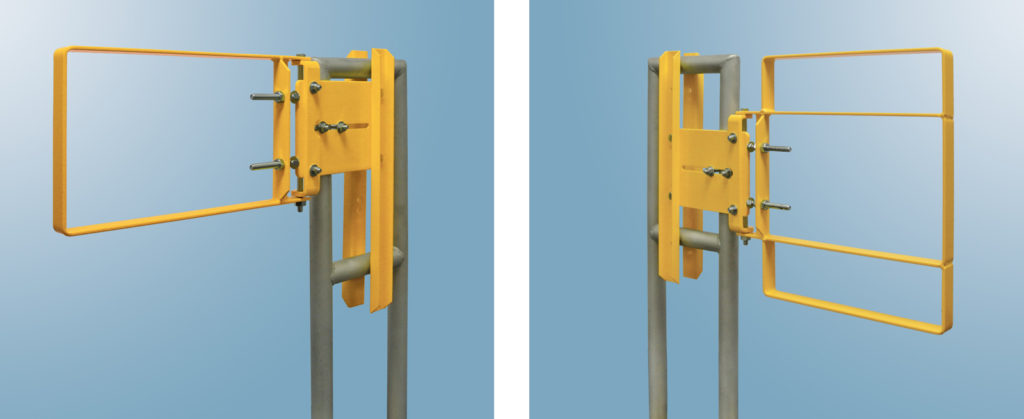
You already know that compliance with OSHA fall protection regulations is a driving force behind adding safety gates to your facility. But while it is your legal obligation, it’s by no means the only reason installing swing gates is a smart idea. In fact, there are several ways this kind of industrial safety equipment can benefit you beyond OSHA compliance. Follow along for 8 reasons why safety gates can benefit your company.
1. Fall Protection
It goes without saying that the biggest benefit of installing safety gates is to protect workers, visitors, and others from potential falls. OSHA requirements are strict about where and when industrial safety equipment should be used. That said, there’s nothing wrong with exceeding their expectations. Any areas within your facility you deem potential fall hazards are a good place to install guardrails, or other fall protection devices — even if they don’t fall under the OSHA guidelines.
2. Access Control
Signs and other warnings only go so far when it comes to keeping unauthorized individuals out your facility. Protecting workers who aren’t trained to work in specific areas within the building is one other consideration. You also want to protect your property after hours, on weekends, and holidays when your facility is supposed to be empty. Safety gates, guardrails, and other devices warn unplanned visitors, even trespassers, of dangers and help keep them from accessing areas where hazards exist.
3. Machine Protection
Swing gates and guardrails perform double duty when it comes to protecting areas around machinery and heavy equipment. First, they prevent people from being hurt by keeping them at a safe distance. Second, they help protect the machinery from damage, vandalism, theft, and unauthorized use. Whether the machines are inside the facility, outside, or up on the roof, it’s good policy to surround the area with guardrails and swing gates. Not only does this protect valuable equipment, it also helps minimize liability.
4. Traffic Control
Industrial facilities are loud, busy places. A person may not notice an oncoming forklift or other machinery. At the same time, having undesignated traffic areas for your employees can limit productivity. Controlling traffic patterns can reduce the chaos. Clearly denoting pedestrian walkways with guardrails and/or safety gates helps mitigate the potential for accidents and keeps the workflow running smoothly.
5. Improved Productivity
Safety measures can help boost the productivity of employees, and that can have a direct impact on your organization’s bottom line. It’s been proven that companies with less injuries are both more efficient and productive. Properly installed industrial safety equipment can help reduce downtime caused by accidents, which in turn increases productivity.
6. Improved Morale
Poor working conditions are a sign that an employer is more focused on money than on the people they rely upon to make it. When employees pick up on this, they’re less likely to be invested in the job at hand — or the company overall. When workers recognize that their employer cares about their safety, they’re more likely to put in that extra effort. Organizations that put an emphasis on workplace safety often see an improvement in employee morale. And that leads to decreased absenteeism, fewer injuries, and improved employee loyalty and longevity.
7. Decreased Costs
Unsafe conditions are extremely costly and can easily exceed the price of safety equipment. A single injury can result in massive penalties, fines, legal costs, and other liabilities. An event like this could literally spell the end of a smaller company. Even larger companies can take a hit — and possibly drive future investors away. In this light, industrial safety equipment can be seen as a financial insurance policy.
8. Reputation Management
Your brand’s reputation is based on the quality of your products and services, customer service, and business ethics. Companies with a reputation for poor safety have a big public relations hill to climb. On top of that, truly skilled employees will look elsewhere for work. Those that put safety first, on the other hand, become the industry standard — and less trouble attracting top talent.
A wise industrial facility manager understands that fall protection has benefits far beyond OSHA compliance. This means that simply doing the bare minimum isn’t enough. Leaders who genuinely care about the safety of their employees know the implications it has on their organization on the macro level. Being OSHA-compliant is just the tip of the iceberg. Want help bringing your company above and beyond? Talk to one of our experts today.













